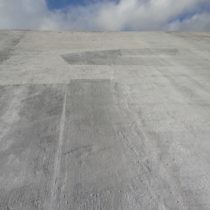Landscape Architecture for Landscape Architects › Forums › TECHNOLOGY › Autocad | Full Path vs. Relative Path
- This topic has 1 reply, 5 voices, and was last updated 12 years, 4 months ago by
 Chris Whitted.
Chris Whitted.
-
AuthorPosts
-
June 6, 2013 at 5:40 pm #154887
 Daniel Miller | RLA, LEED APParticipant
Daniel Miller | RLA, LEED APParticipantAnyone care to share which Autocad XREF method they use as their office standard? Every LA firm I’ve ever worked for has done Full Path XREFs as their standard, but I’m seeing architects and consultants sharing files as Relative Path XREFs. I see the benefit to Relative paths (especially when sharing/e-transmitting files to other disciplines), but I’m curious to hear if there are any drawbacks when working mostly on a singular, in-house server where Full paths easily reside.
Any insights, experiences, tips? Thanks!
June 6, 2013 at 8:38 pm #154892 Chris WhittedParticipant
Chris WhittedParticipantI’ve always used relative. It’s more for my (our) benefit than anyone else’s, as it allows relocating/renaming a file/project without breaking xref links so long as you preserve the folder/path structure. It really depends on your file management practices. Bottom line, it doesn’t really matter unless you’re running into a problem on a regular basis.
So far as I can tell, there are absolutely no benefits to using full path – unless some script or program requires it (for example Python scripts can’t use relative paths, but that comes from the GIS world and I’m not sure about LISP or anything else specific to CAD). Beyond that, full paths are disadvantageous in that if you move or change the name of anything, even the root project file or going from your f: project drive to your z: archive drive, you break all xref links. This also becomes an issue if you don’t have standard drive mappings – ie Bob down the hall as the project drive as D: because he doesn’t have an optical drive, but you have it as F: because you have two hard drives and an optical drive.
Relative paths allow you to move things around, and provided you get a folder structure from other consultants would also come in handy for sharing files. Most of the time when I get files from other consultants, they’re single files so I have to repath everything anyway because they don’t use the same drive letters, let alone folder structure we do for projects.
Other related issues are overlay vs attach, nesting, and binding, and those are as if not more important than pathing when it comes to sharing files. Note that e-transmitting has an option to convert to relative paths, so even if the consultants you’re getting files from appear to be using relative, internally they may be using full/absolute.
June 7, 2013 at 1:39 pm #154891 Robert AndersonParticipant
Robert AndersonParticipantI would agree with Chris. I consult with another firm and we recently experienced an issue with our server and in the process of replacing it we learned that it is better to use relative references for all things not just CAD. We are using Vectorworks Landmark and even here we must use relative. It might depend on your servers operating system but for transporting work to and from work to my home office relative is the way to go.
Best of luck!
July 22, 2013 at 11:14 am #154890 karl jakobParticipant
karl jakobParticipanthi,
my personal preferance is for hard pathing. our company is prefering softpathing as a convenience to copy the directory structure to a cd for the client or to a new directory phase. the downside to the softpath approach is i’m not longer able to copy a file to a sketch subdirectory within the project. also, i’ve been bit in the past when a file was moved (so acad could not find it) and alternate search pathing kicked in. acad found a file named the same (older & intended to be junk) and we went for two months before the discrepancy was discovered.
i have tools to repath quickly, so it’s not a bother to me to update new paths.
both approaches have value, provided the users understand each.
karl
August 16, 2013 at 6:59 am #154889 Paul StaffordParticipant
Paul StaffordParticipantHi all
I have always used relative pathing. For me there has never been any benefit to using full pathing – BUT there has been a big disadvantage to using full pathing. Twice the companies I have worked for needed to migrate to a new server and everything was full pathed! It was quite a headache and very time consuming to sort through and change everything to relative pathing.
Unless your company requires you to use full path – as Karl’s did above – then I would highly recommend using relative pathing for all referencing
Regards
Paul Stafford
CADsmarter.com
August 16, 2013 at 12:06 pm #154888 karl jakobParticipant
karl jakobParticipanthi again,
hard pathing is not dictated by my company, they prefer soft pathing. our IT dept. does keep the drive letters flexible so server migration issues are transparent to the users. if i had to worry about such issues, then softpathing or a routine to go thru all files would be required.
karl
-
AuthorPosts
- You must be logged in to reply to this topic.


